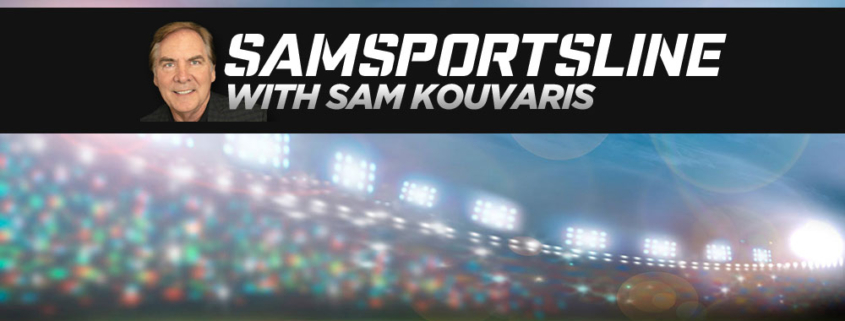The Art of Daytona
Opening testing to the news media and the public in January gives NASCAR a head start on publicity for the new season, but it really kicks off ten days before the Daytona 500, a 10-day “Speedweek.” The drivers gather on Thursday for the Bud Shootout draw, a goosed up media event that determines the starting grid for that weekend’s race. They used to run this race on Sunday afternoon when it was called the Busch Clash, but now it’s at night, better to take advantage of the higher television viewing, and give Fox a chance to figure out how they’re going to cover the big race. The Thursday event is also a sort of “media day” for the 500, with the drivers consenting to interviews after the draw. It’s a far cry from years past when drivers chased down the media in the garage area, seeking publicity for their sponsors and owners. Now, Thursday is the time to get the questions in, because the top guys disappear virtually until race day.
You can feel things get revved up at the track. The haulers arrive, the sound changes as more cares are cranked up, tested, and get on the track. The numbers increase, whether it’s fans, media, sponsors or NASCAR officials. The place is buzzing by Saturday of the Bud Shootout, campers have arrived, tents are pitched and the beer is flowing. I’ve covered NASCAR for 25 years, but the last ten years have seen the sport explode. The hard-core fan has always been there, setting their calendar around the Daytona 500. Vacations are planned, money is saved, and hopefully, designated drivers are assigned. International Speedway Corporation owns and runs the track in Daytona (as well as several others) and allows people in and out of the track based on the events scheduled. You can buy a day pass, a multi-day for the infield, or in some cases, a weekend pass to experience the race environment with about 100,000 of your closest friends. If they’re not when you get there, they will be by the time you leave. The sight of the infield as you emerge from the tunnel beginning on Thursday of race week is at first stunning, and in part mystifying. Where’d all these people come from and what are they doing here? Jaws drop as the tube tops start to come off, the flags flap in the breeze and the pile of beer cans turns into first a hill, then a mountain. There are some fans that make artwork out of their discarded cans, a testament to their stamina and creativity.
I was standing in the parking lot once, surveying the line of vehicles preparing for entry to the infield through the tunnel. They weren’t opening the gates for another eight hours, but the cars and trucks were already lined up. “Hey, Sam,” one of the drivers called out. “Check this thing out,” he shouted as a follow up. His pickup was outfitted with a welded ironwork platform on the back with the bed full of beer. “Twenty-two cases,” he said with pride. “But we’ll have to restock in a few days.” “That thing’s too tall,” I naively said, noting the height restriction to pass through Daytona’s tunnel. “Naw, seben, leben, tree-quarter,” was the immediate reply. It took a few times of hearing that phrase repeated to translate it to seven feet, eleven and three-quarter inches. “The man says ‘too tall’ I tell him, ‘put a stick on it’,” my new friend’s way of inviting a measurement. Anything over eight feet has to wait for the gate to open to cross over the track. That’s wasted infield time, and nobody wants that. “I still think it’s too tall,” I said after surveying the height. The driver leaned toward me, glanced over both shoulders and whispered, “We lit the are out the tares,” and chuckled at the thought. I laughed as well, and gladly accepted the offer of an adult beverage. I’ll drink with anybody with that kind of ingenuity.



